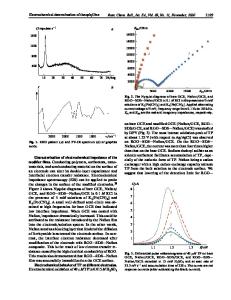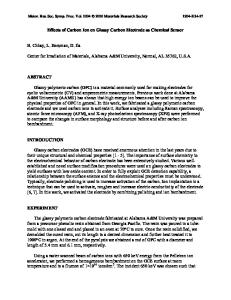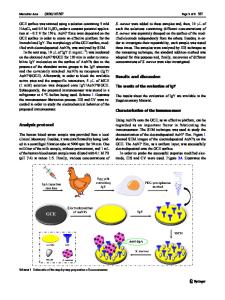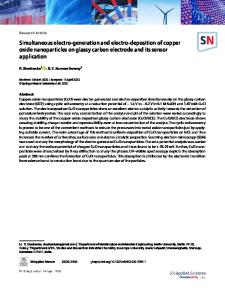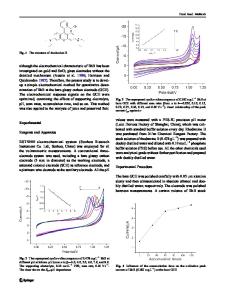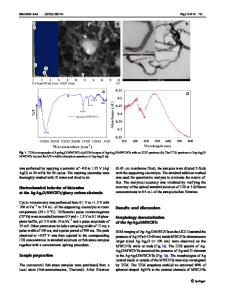Electrochemical/chemical synthesis of hydroxyapatite on glassy carbon electrode for electroanalytical determination of c
- PDF / 2,305,722 Bytes
- 17 Pages / 595.276 x 790.866 pts Page_size
- 86 Downloads / 400 Views
ORIGINAL PAPER
Electrochemical/chemical synthesis of hydroxyapatite on glassy carbon electrode for electroanalytical determination of cysteine Nives Vladislavić 1
&
Ivana Škugor Rončević 1
&
Marijo Buzuk 1
&
Maša Buljac 2
&
Ivana Drventić 3
Received: 16 September 2020 / Revised: 27 October 2020 / Accepted: 28 October 2020 # Springer-Verlag GmbH Germany, part of Springer Nature 2020
Abstract Hydroxyapatite (HAp)-modified glassy carbon (HAp/GC) electrode was prepared through a two-step chemical reaction process: Hydrogenphosphate, firstly formed by electrodeposition at constant potential, was converted into HAp film via an acid-base reaction in the second step. The electrochemical behavior and potential of electroanalytical determination of cysteine using the HAp/GC electrode were studied using cyclic voltammetry and square wave anodic stripping voltammetry. The HAp/GC electrode exhibited great performance in determination of cysteine, owing to the high absorbability of HAp and electroanalytical properties of GC. Properties, such as absorbability of the optimized HAp film, were studied by electrochemical impedance spectroscopy and Fourier transform infrared spectroscopy and scanning electron microscopy with energy-dispersive spectroscopy analysis. Surface investigation confirmed that transport pathway has complex behavior. The presence of HAp film on the GC surface, as well as the presence of a CySH on the HAp film, is also confirmed and EIS results are in the agreement with FTIR results and indicate that CySH was adsorbed onto inner surface of the pores of HAp film, resulting in a change in impedance response. Both optimized procedure and analytical applicability of HAp/GC electrode were demonstrated by direct electrooxidation of cysteine. A linear response between 0.5 and 10 μmol dm−3 with estimated detection limit of 0.03 μmol dm−3 was obtained. A powerful electroanalytical tool was designed by simple modification of the GC electrode with biofunctional material. Keywords Hydroxyapatite . Glassy carbon electrode . Cysteine . Electroanalytical application
Research highlights 1. The novel chronoamperometric procedure for preparation of environmental friendly electrochemical sensor was developed. 2. Simple electrochemical/chemical preparation results in HAp morphology suitable for selective adsorption. 3. Cysteine oxidation mechanism based on physical adsorption is proposed. 4. Analysis of Cysteine by proposed method. 5. Improved analytical performance of proposed method over other reported studies. * Nives Vladislavić [email protected]
Ivana Drventić [email protected]
Ivana Škugor Rončević [email protected]
1
Department of General and Inorganic Chemistry, Faculty of Chemistry and Technology, University of Split, Split, Croatia
Marijo Buzuk [email protected]
2
Department of Environmental Chemistry, Faculty of Chemistry and Technology, University of Split, Split, Croatia
Maša Buljac [email protected]
3
Analytical Chemistry Laboratory, Faculty of Natural Sciences and Engineering, University
Data Loading...
